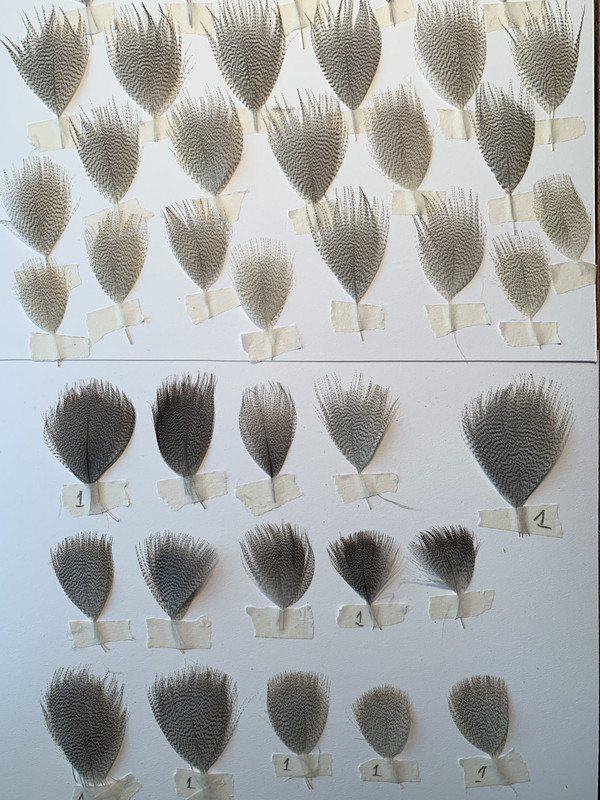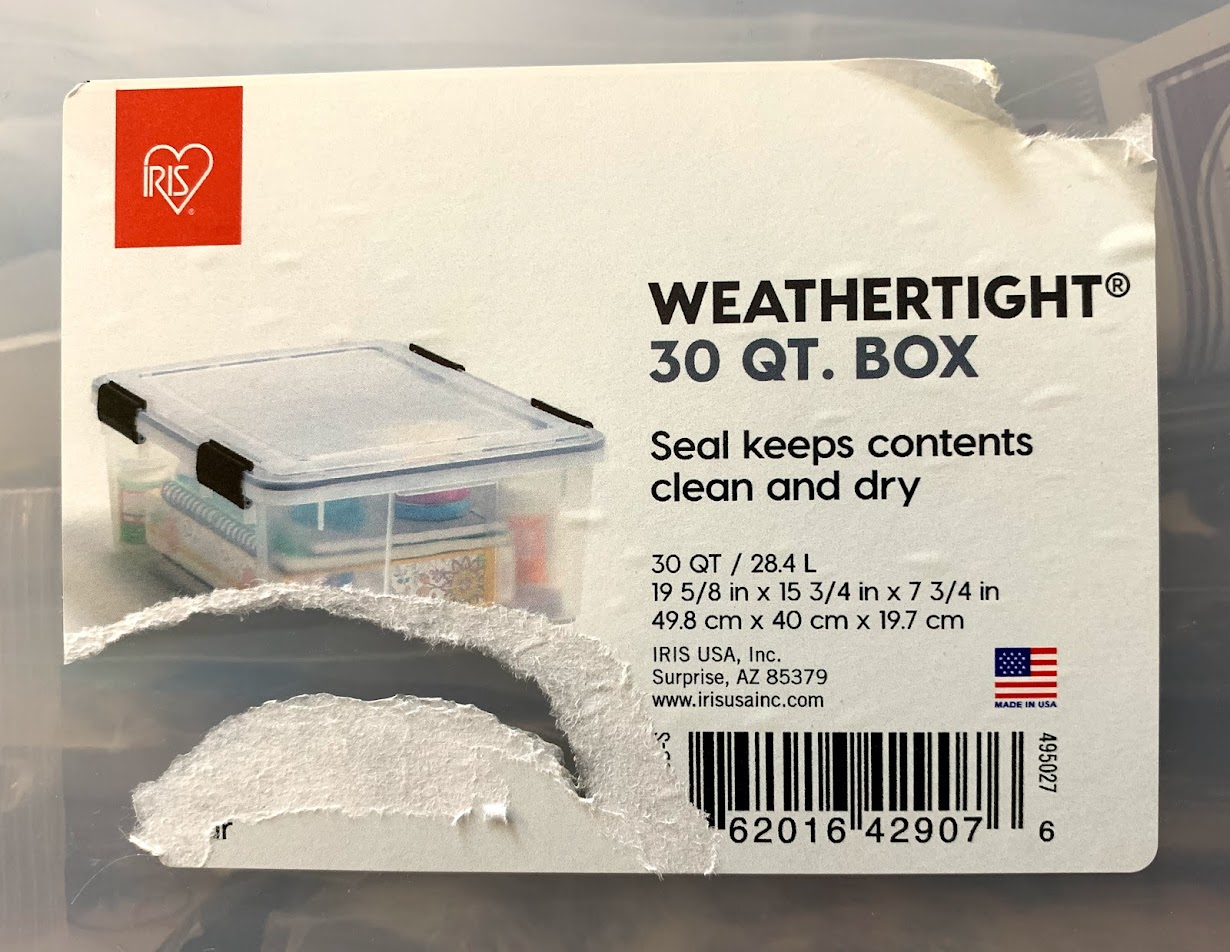Safe Material Storage
Moderators: William Anderson, letumgo
Re: Safe Material Storage
Thank for the tip! I’ve been looking for these ever since the shell no pest strips are no longer available.
MANY Thanks, Dana
MANY Thanks, Dana
Soft and wet - the only way....
Re: Safe Material Storage
I isolate everything to at least two, and usually three levels. I.E. Clean, DRY material goes into a well sealed zip top bag. Groups of corresponding materials go into a larger zip top bag. Finally, these go into Lock n Lock containers, the very best airtight, stackable, containers on the market.
www.locknlock.com
Good old fashioned glass jars are another way to isolate and preserve materials, especially those that you don't want to crush flat, like wood duck flank feathers. Years ago, we used to go to the local deli and ask for the used glass mayo jars. These gallon size jars and would hold a ton of materials. One of the plusses was that you could see what was inside. Sadly, they have been superseded by plastics and are no longer available. I also like Mason jars and you can get these in uniform sizes.
Paradichlorobenzene and Naphthalene were the standard insect repellent/killers for tying materials for many years but they have been linked to medical problems in humans and animals and are no longer recommended. An old girlfriend, who was a research veterinarian, wouldn't come into my house because I was using Paradichlorobenzene and she told me about Pyrethrin.
Pyrethrins are pesticides found naturally in some chrysanthemum flowers. They are a mixture of six chemicals that are toxic to insects. Pyrethrins are commonly used to control mosquitoes, fleas, flies, moths, ants, and many other pests. ... Whole, crushed flowers are known as pyrethrum powder. (From the internet)
I have been using Pyrethrin powder for many years and I swear by it. It's also safe for humans and animals and is the chemical used in insect repellent clothing. (I buy Pyrethrin spray and treat my fishing cloths with it.) It's available on Amazon for just a few bucks. I dust any suspicious materials with the powder and isolate it in a zip top bag for a week or so before I store it in a Lock n Lock.
Full bird skins may be impressive to look at but it makes sense to remove the feathers that you will actually use and give or throw the rest away. I do this with partridge skins and other birds that I use a lot. The old timers who had neither the modern pesticides or containers we have knew that insects attack the skin and usually plucked off the good feathers, sorted them into envelopes, and tossed the skins out.
www.locknlock.com
Good old fashioned glass jars are another way to isolate and preserve materials, especially those that you don't want to crush flat, like wood duck flank feathers. Years ago, we used to go to the local deli and ask for the used glass mayo jars. These gallon size jars and would hold a ton of materials. One of the plusses was that you could see what was inside. Sadly, they have been superseded by plastics and are no longer available. I also like Mason jars and you can get these in uniform sizes.
Paradichlorobenzene and Naphthalene were the standard insect repellent/killers for tying materials for many years but they have been linked to medical problems in humans and animals and are no longer recommended. An old girlfriend, who was a research veterinarian, wouldn't come into my house because I was using Paradichlorobenzene and she told me about Pyrethrin.
Pyrethrins are pesticides found naturally in some chrysanthemum flowers. They are a mixture of six chemicals that are toxic to insects. Pyrethrins are commonly used to control mosquitoes, fleas, flies, moths, ants, and many other pests. ... Whole, crushed flowers are known as pyrethrum powder. (From the internet)
I have been using Pyrethrin powder for many years and I swear by it. It's also safe for humans and animals and is the chemical used in insect repellent clothing. (I buy Pyrethrin spray and treat my fishing cloths with it.) It's available on Amazon for just a few bucks. I dust any suspicious materials with the powder and isolate it in a zip top bag for a week or so before I store it in a Lock n Lock.
Full bird skins may be impressive to look at but it makes sense to remove the feathers that you will actually use and give or throw the rest away. I do this with partridge skins and other birds that I use a lot. The old timers who had neither the modern pesticides or containers we have knew that insects attack the skin and usually plucked off the good feathers, sorted them into envelopes, and tossed the skins out.
Re: Safe Material Storage
I'm a fan of doing this too, especially with birds having a lot of fat, like ducks. The whole process is fairly methodical for me, as I like to create left and right pairs, and tape them onto heavy acid-free paper (with acidic masking tape, lol). The tape touches the stem part that gets cut off later, so it's not really an issue. I've done this with Woodies, Mallards, Teal, and one golden plover that had not been cured long enough. The little panels then get stored flat in small plastic shoebox tubs. I don't like them being airtight though, I like a little air circulation, though I can't scientificially say it's good--.Greenwell wrote: ↑Sun Dec 20, 2020 5:18 pm
Full bird skins may be impressive to look at but it makes sense to remove the feathers that you will actually use and give or throw the rest away. I do this with partridge skins and other birds that I use a lot. The old timers who had neither the modern pesticides or containers we have knew that insects attack the skin and usually plucked off the good feathers, sorted them into envelopes, and tossed the skins out.



bb
- letumgo
- Site Admin
- Posts: 13346
- Joined: Sat Feb 21, 2009 7:55 pm
- Location: Buffalo, New York
- Contact:
Re: Safe Material Storage
In recent years I've been storing materials in weatherproof bins. They are a bit expensive, but they provide another layer of protection to the considerable investment in hackle.

The inside rim of the lid has a wide foam liner which compresses against the body of the storage container, sealing the contents from the outside. All new materials go into these storage bins now.

They come in several sizes. These sizes are most useful for storage.


The inside rim of the lid has a wide foam liner which compresses against the body of the storage container, sealing the contents from the outside. All new materials go into these storage bins now.
They come in several sizes. These sizes are most useful for storage.
Ray (letumgo)----<°))))))><
http://www.flytyingforum.com/index.php? ... er=letumgo
"The world is perfect. Appreciate the details." - Dean
http://www.flytyingforum.com/index.php? ... er=letumgo
"The world is perfect. Appreciate the details." - Dean
Re: Safe Material Storage
Sorted and bundled materials from the Henry Walbran Cooper Collection
Re: Safe Material Storage
Mr. Cooper's Obituary describing how he prepared his feathers.
Some of the envelopes from the HWC collection.
Some of the envelopes from the HWC collection.
- letumgo
- Site Admin
- Posts: 13346
- Joined: Sat Feb 21, 2009 7:55 pm
- Location: Buffalo, New York
- Contact:
Re: Safe Material Storage
John - I think these flies are Henry Walbran Coopers.
https://flymphforum.com/viewtopic.php?f=6&t=5983
https://flymphforum.com/viewtopic.php?f=6&t=5983
Ray (letumgo)----<°))))))><
http://www.flytyingforum.com/index.php? ... er=letumgo
"The world is perfect. Appreciate the details." - Dean
http://www.flytyingforum.com/index.php? ... er=letumgo
"The world is perfect. Appreciate the details." - Dean
Re: Safe Material Storage
Just a few hundred.......I have his fly wallets, materials, and manuscript collection. Here are some examples.ForumGhillie wrote: ↑Mon Dec 21, 2020 7:01 pm John excellent, thank you for posting.
Do you have any of his flies?
